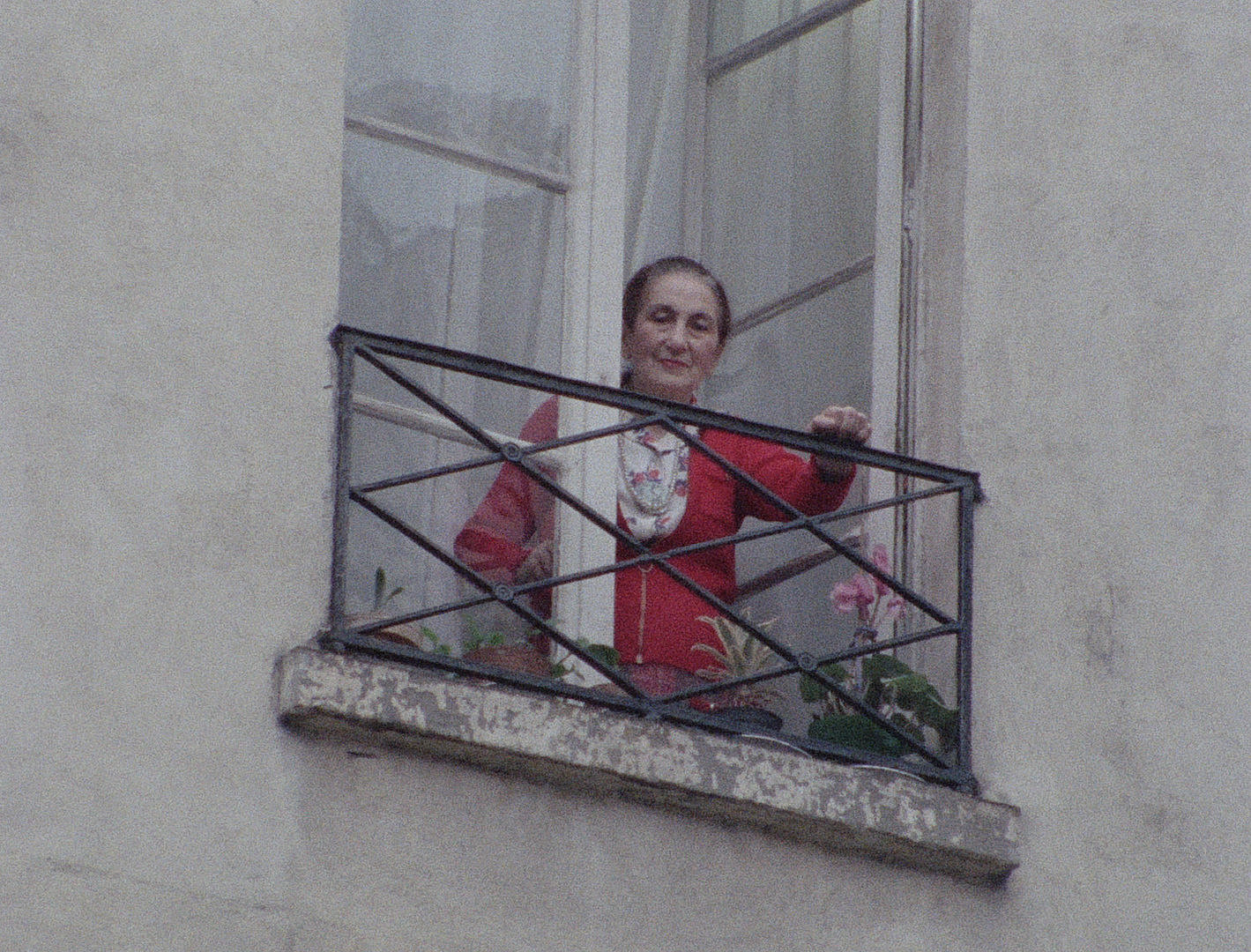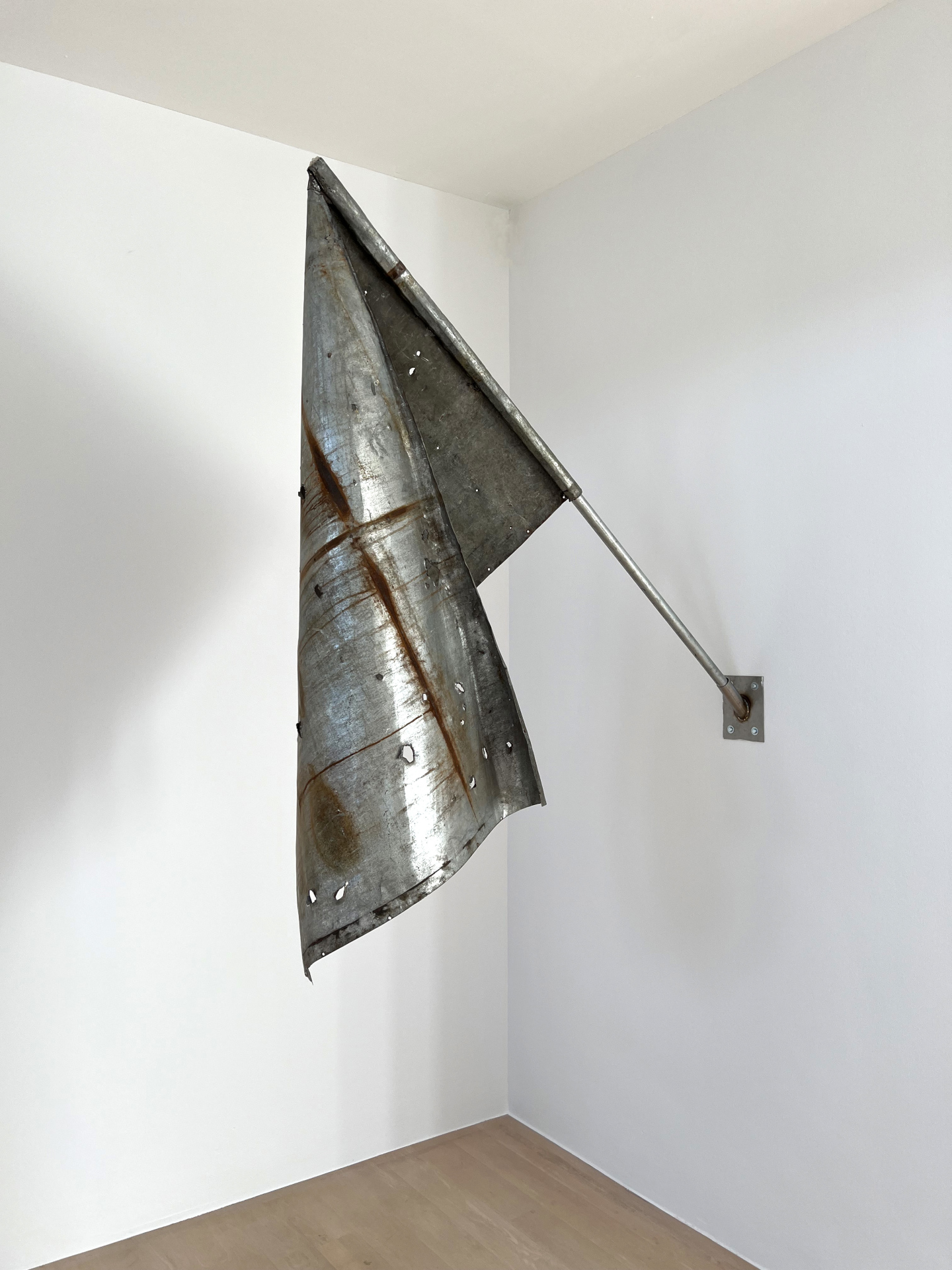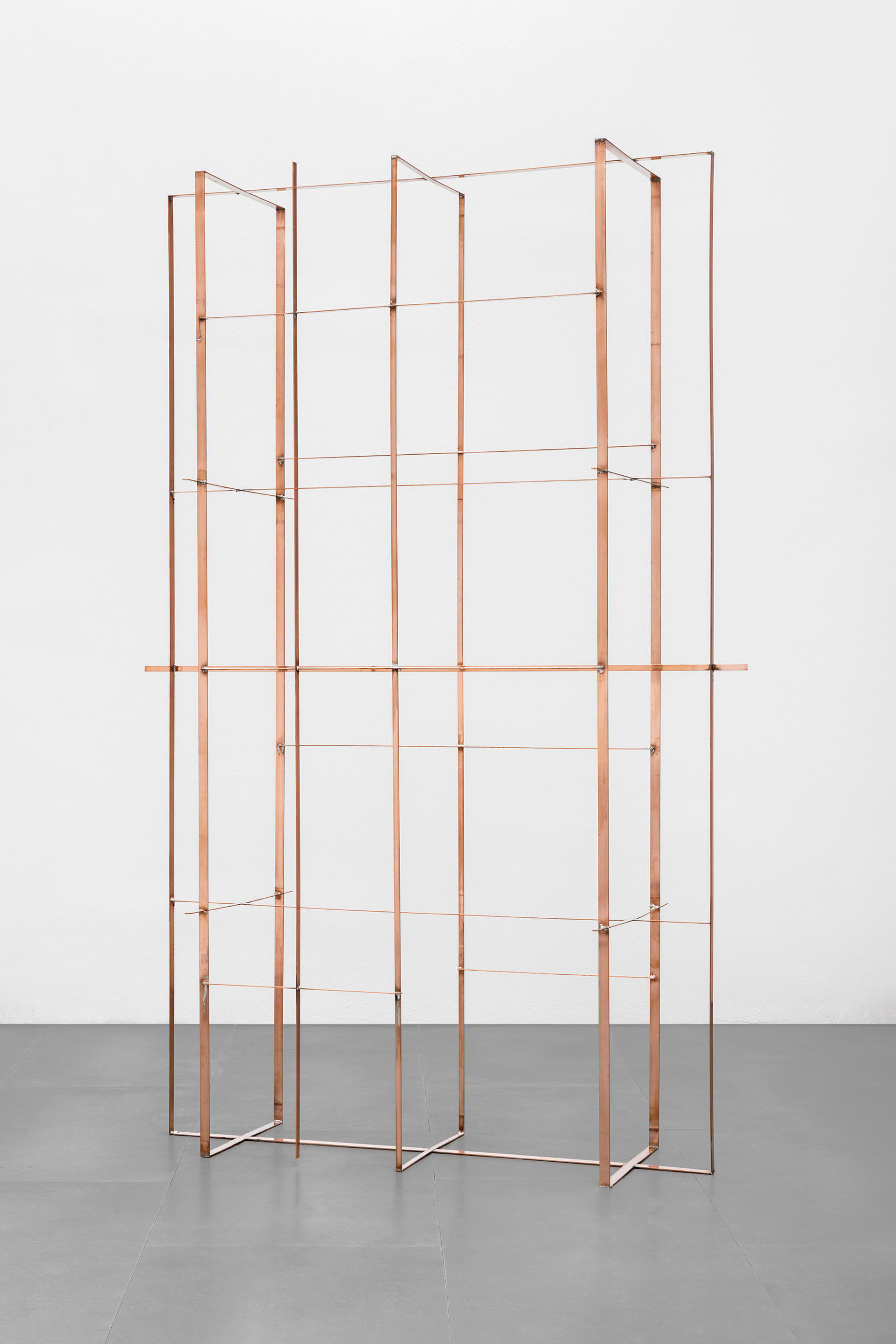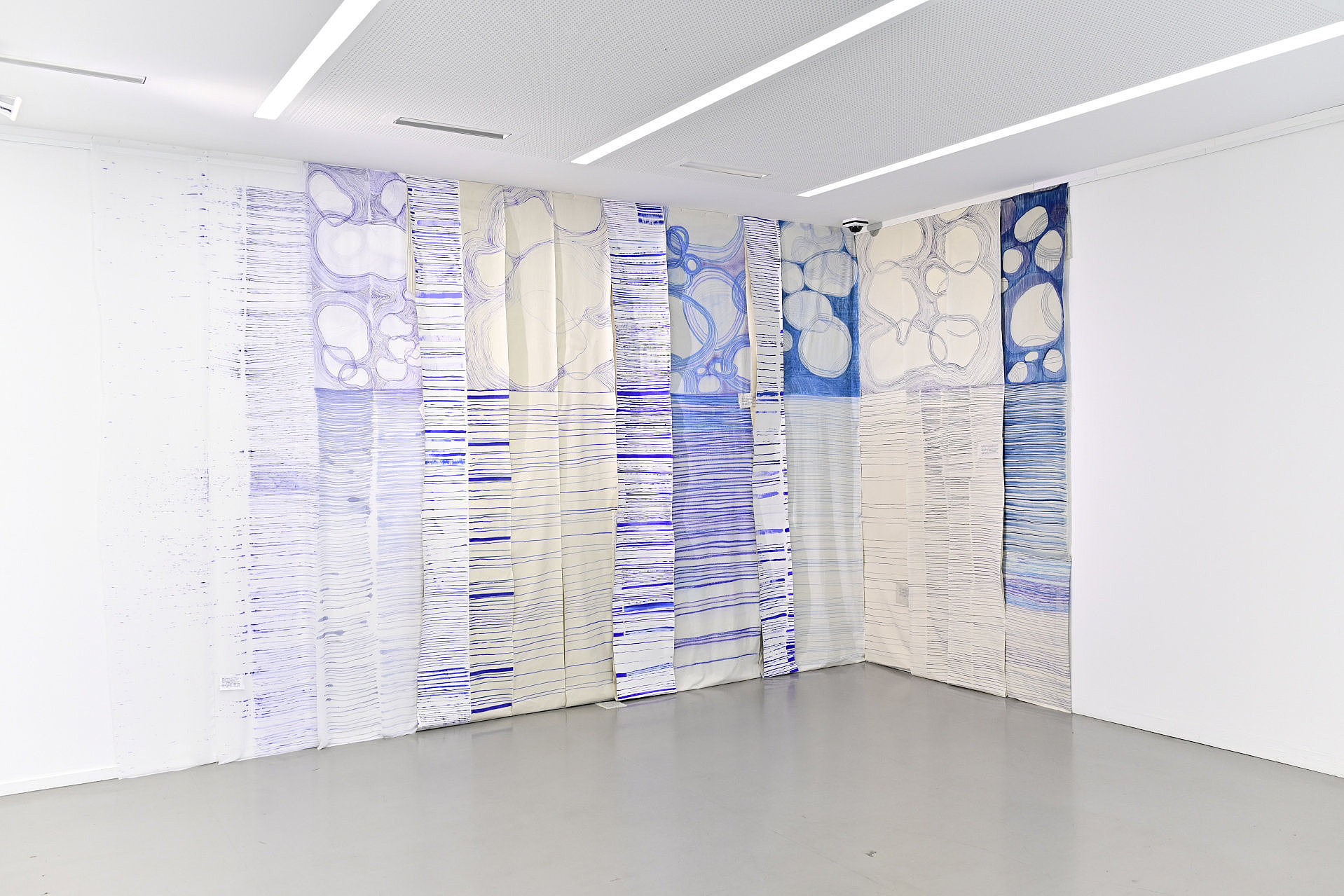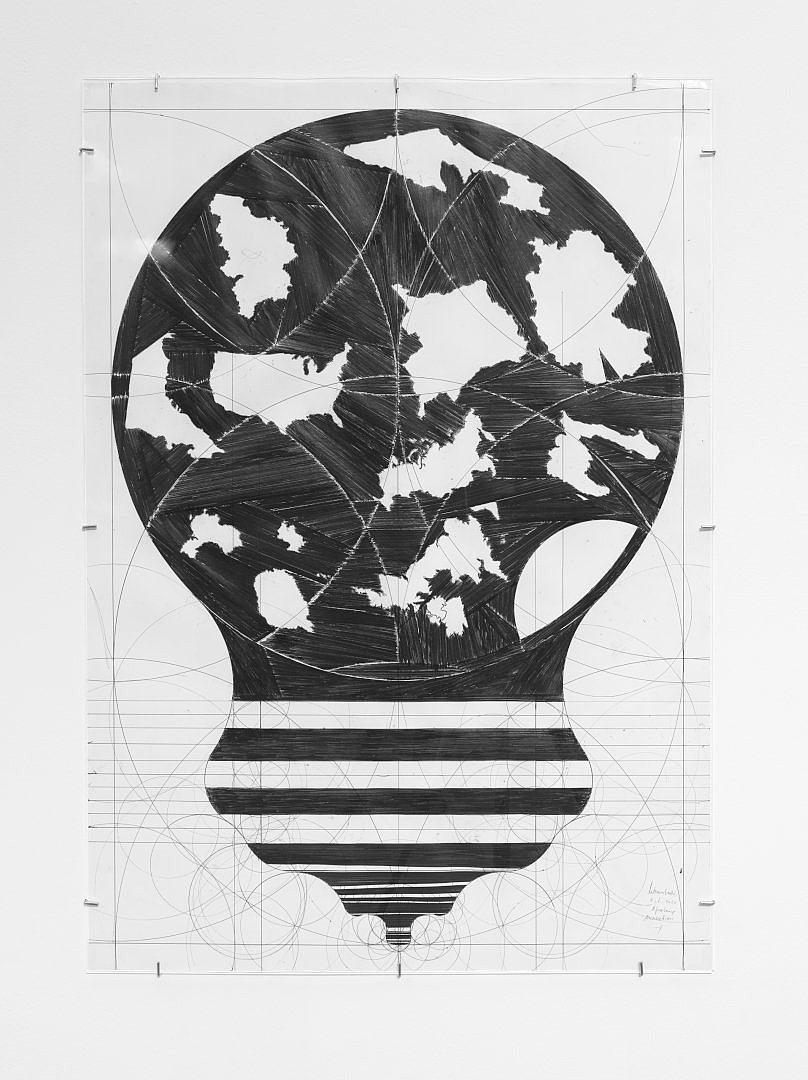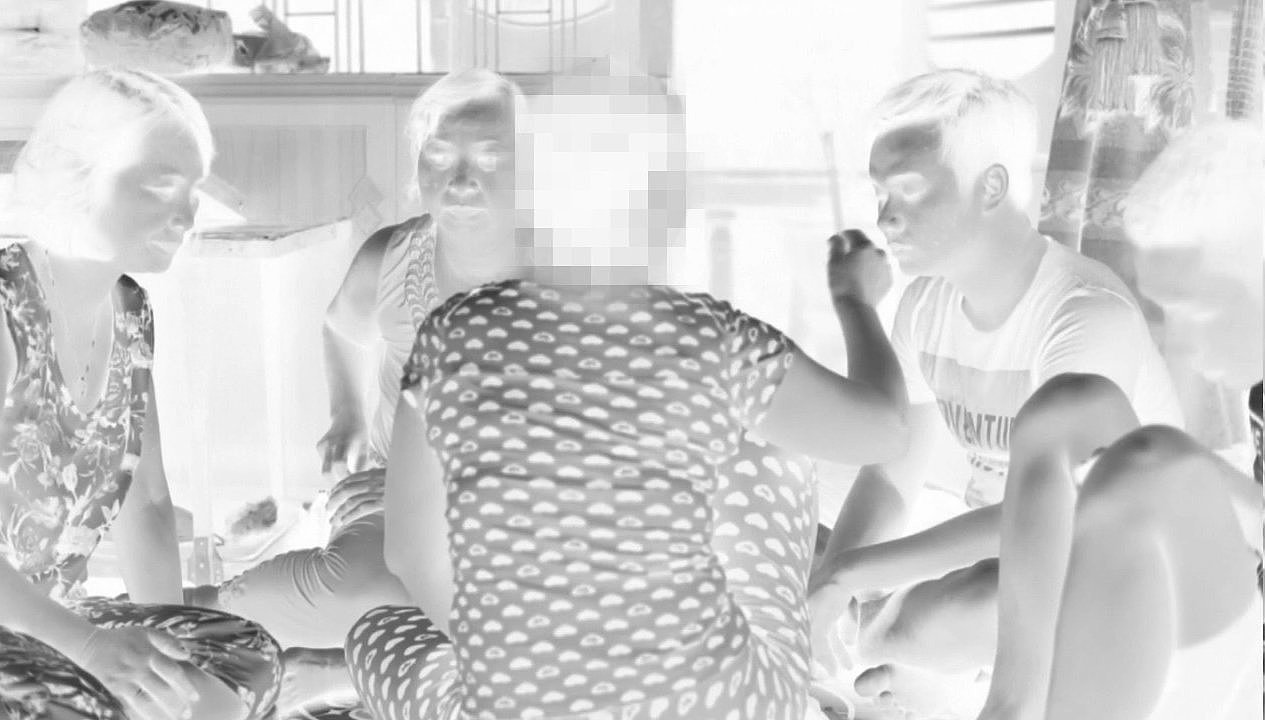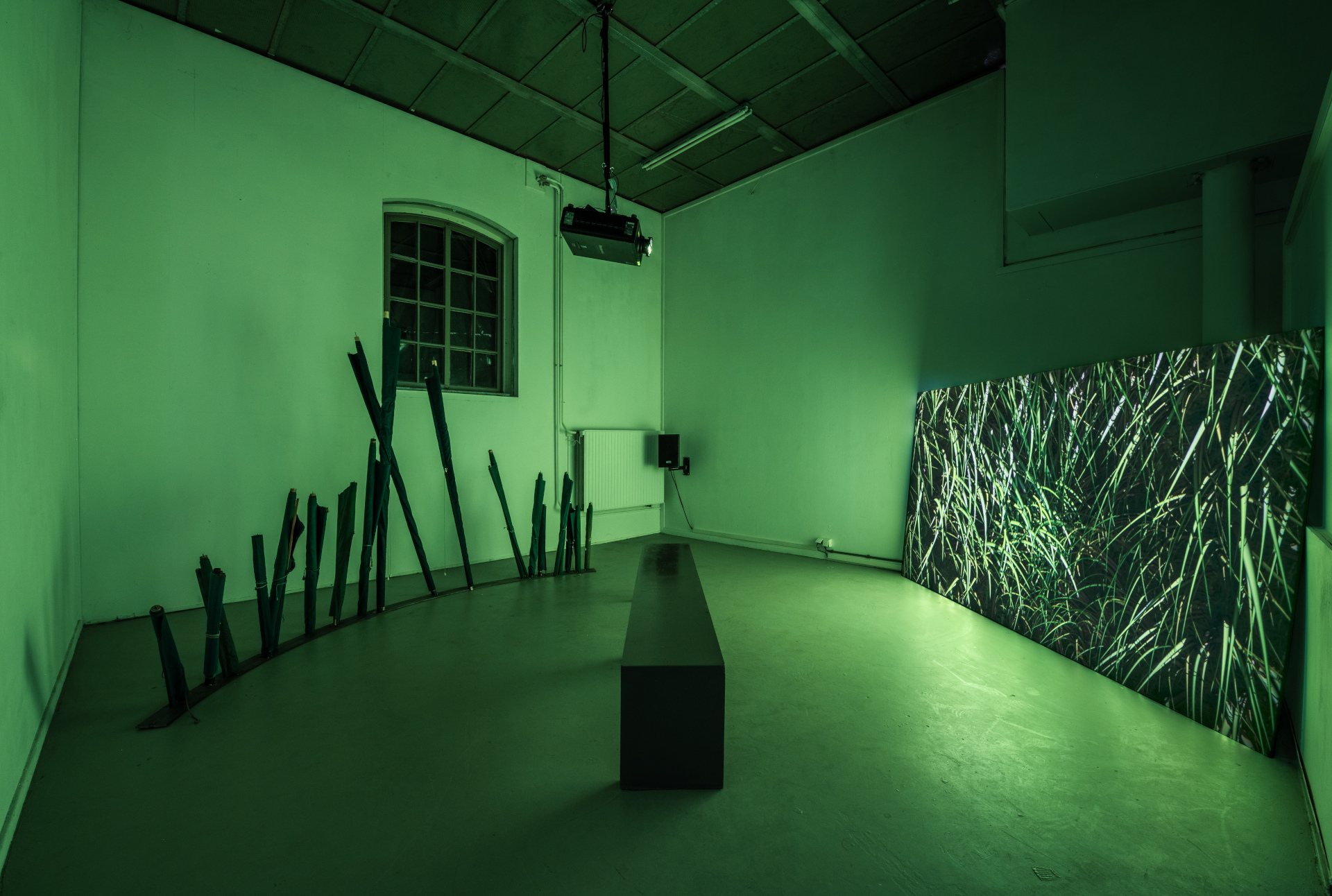Artists and works
Chantal Akerman, Aujourd’hui, dis-moi, 1980
Aujourd’hui, dis-moi (Tell me) was commissioned by French television as part of a series about grandmothers. Filmmaker Chantal Akerman visits three elderly Jewish women, all survivors of the Shoah, in their homes in Paris. They talk about their lives, their families, and their everyday routines. Between the conversations, we hear the voice of Akerman’s mother, Natalia Akerman, whose parents were murdered in a concentration camp, and who never spoke herself about her time in Auschwitz. Aujourd’hui, dis-moi is a portrait of different generations of Jewish women who shared experiences of loss, trauma, and emigration, but whose lives took very different paths. They testify gently but forcefully to how much the past echoes in the present. Chantal Akerman (1950–2015) lived and worked in Brussels, Paris, and New York, among other places.
Nikita Kadan, Gazelka II, 2015
Nikita Kadan’s sculpture Gazelka II transforms war-damaged material into the form of a flag. The artist found the remains of a GAZ-3302 minivan, known colloquially as a “Gazelka,“ little gazelle, in the Ukrainian city of Siverskodonetsk. The city was occupied by pro-Russian forces in May 2014. After two months of fierce fighting that destroyed large parts of the city, it was recaptured by the Ukrainian Army. Since 2022, the city has been under Russian control again. By transforming the evidence of destruction into a fluttering flag, Kadan makes it a symbol of self-determination. In his art, objects regain a degree of sovereignty, both testifying to and denouncing the war of aggression. Nikita Kadan (b. 1982) lives and works in Kyiv.
Tarik Kiswanson, The Conservatory, Saint-Denis, 2025 I An Opening, 2023 I Anamnesis, 2022
Tarik Kiswanson’s works deal with experiences of rupture, loss, and regeneration. His video work The Conservatory is set at the Conservatoire de Saint-Denis, just outside Paris, which was founded as a social project in 1977. In the video we witness the hands of three children playing consecutively Beethoven’s “Ode to Joy,” which became the official anthem of the European Union in 1985. It is a setting of a poem by Friedrich Schiller, which celebrates the ideal of an equal society. With their hesitant yet self-determined playing, the children make this promise of equality their own—a promise that is often at odds with European reality. In the delicate copper sculpture An Opening Kiswanson reconstructs his grandmother’s closet as a spectral form. The contact points between each strip of copper are welded with melted silver repurposed from objects that his Palestinian family took with them when exiled from Jerusalem, first to Tripoli, then to Amman. In its lightness, An Opening emphasizes the incompleteness of memory. Similarly, the work Anamnesis is a spatial reminiscence of the artist’s and his sisters’ memories of their childhood home in a suburb of the city Halmstad in Sweden. The model of the floor plan cast in a block of opaque resin recalls the small two-room apartment in a social housing complex in which they lived. Tarik Kiswanson (b. 1986) lives and works in Paris.
Hiwa K, Pre-Image (Blind as the Mother Tongue), 2017 I 0° Blind Spot, Where Beloved is…, 2017–18
In Pre-Image, Hiwa K combines video, sound, and sculpture to create a fragmented space-time experience that retraces his flight from Kurdistan - Northern Iraq to Europe in the mid-1990s. However, the journey via Turkey, Greece, and France to Italy is not reconstructed chronologically. Instead, the film disrupts a linear narrative to recreate a sense of disorientation. This is accentuated by the sculpture 0° Blind Spot — a metal rod with motorcycle mirrors that the artist balances on the bridge of his nose as he travels. The construction functions as a paradoxical navigation device. It reflects the surroundings, representing the traversed landscapes, but only in fragments. The film contradicts what the artist calls “pre-images”—prefabricated images and assumptions that assign people to categories and regulate their movements, and explores modes of existence beyond national boundaries. Hiwa K (b.1975) lives and works in Berlin und Sulaimaniyya.
Atalya Laufer, Exodus, 2024/25
The invitation from the Eberswalde Museum to respond to the works of the artists Lea Grundig und Ellen Auerbach from their time in exile in Palestine prompted Atalya Laufer to talk to her father for the first time about his experiences on the refugee ship “Exodus 1947.” Like the approximately 4,500 other Jewish Holocaust survivors, in 1947, together with this parents, he boarded a ship from France to Palestine, then a British mandate territory. They were denied entry and the ship was sent back to Port-de-Bouc. Since the passengers did not want to leave the ship and the French authorities refused to force them to disembark, the British authorities decided after three weeks to take them to the British occupation zone in Hamburg. There they were housed in camps. For many, transport to Germany was a renewed trauma. In Laufer’s work, the sea appears as a space of uncertainty, situated between insecurity and hope. Quotes from her father’s memories appear as small fragments of text. Atalya Laufer (b. 1979) lives and works in Berlin.
Jean Katambayi Mukendi, Escalation (Afrolampes), 2024 I Afrolampe Ndjekele (afroled), 2024 I Intersection, 2025
Jean Katambayi Mukendi’s lightless Afrolampes point to a contradiction: the mineral resources of the Democratic Republic of Congo (DRC) are essential for global technology infrastructures, yet everyday life for the local population is characterized by energy shortages. As a symbol of electrification, the light bulb leads back to the beginnings of colonialism and the extraction of raw materials in the country: rubber, uranium, coltan—highlighting how the exploitation of the Congo has always provided resources for war and industrialization worldwide. Mukendi’s drawings place the DRC at the center of conflicts over global resources. With his poetic-technical art, he seeks to salvage the resistance of the Congolese population amid a dilapidated infrastructure. Jean Katambayi Mukendi (b. 1974) lives and works in Lubumbashi.
Selma Selman, Crossing the Blue Bridge, 2024
Crossing the Blue Bridge is based on a story told by Selma Selman’s mother, who lived through the Bosnian War in the town of Bihac. In 1994, on a day when there was a ceasefire, she went into town with her daughter, Selma’s younger sister, to sell some goods and buy food. On the way back, she found out that the city bridge had been bombed, killing many people. The only way back home was on foot, across that bridge. With one hand she covered her daughter’s eyes, with the other she held the basket of food. Thirty years later Selman reenacts this journey home. In doing so, she combines her mother’s memories with stories that speak of hardship and destruction as well as of courage, care, and resistance. Based on Selman’s own experience of growing up as a Romani woman in postwar Bosnia and Herzegovina, her works also reflect universal questions of transnational identity, trauma, and memory. Selma Selman (b. 1991) lives and works in Bihać and Berlin.
Hito Steyerl, November, 2004
In her video essay, Hito Steyerl explores the relationships between territorial power politics, individual resistance, and image politics. The focus is on her childhood friend Andrea Wolf, who joined the Kurdish freedom struggle and was killed by the Turkish military in 1998. Scenes from a feminist kung fu film that the two made as teenagers are interwoven with images from Kurdish television, footage of a memorial service for the short-lived Bavarian Soviet Republic, and other archival material. The title “November” refers to the onset of a post-socialist era, following the collapse of real-existing socialism in 1989 and signaling a break from the legacy of the October Revolution. Wolf’s story is the dramatic crux of Steyerl’s work: from a star in an amateur action film, she becomes a revolutionary icon. Widely reproduced in the media, her image is disseminated across space and time, blurring fact and fiction and thus tracing the entanglement of revolutionary politics with the global circulation of images. Hito Steyerl (b.1966) lives and works in Berlin and Munich.
Sung Tieu, No Gods, No Masters, 2017 I Newspaper 1969 – ongoing, 2017
No Gods, No Masters deals with psychological manipulation as a weapon of war and the complex history of spiritual traditions in Vietnam. The video shows negative images of M! Cày, a rural district in southern Vietnam, accompanied by rainforest sounds and echoes of Vietnamese funeral music. As the video progresses, the moans and cries of a baby pierce the landscape. The sounds come from “Ghost Tape No. 10,” a haunting tape recording developed in 1969 by the US military as a psychological weapon. Tieu combines images of the landscapes with recordings from her own family home in Hai Duong. Here, devotion to spirits serves to convey wishes. In addition, Tieu displays a newspaper whose writing style is modeled on that of an American newspaper that reported on the war at the time. Here she reconstructs three milestones significant to Vietnam’s collective memory—1969, 1996, and 2017. Realistic facts blur the lines between information and fiction and point to differing perspectives informed by experience and reporting. Sung Tieu (b. 1987) lives and works in Berlin.
Miloš Trakilović, Colorless Green Freedoms Sleep Furiously, 2023
In the video installation Colorless Green Freedoms Sleep Furiously, Miloš Trakilovic uses his family history to explore the tensions between memory and digital technology, military visual culture and computer-generated images. The work is based on a story told by his mother, Milijana Mendeš, who survived the Bosnian War and fled to Amsterdam with her two children in 1995. In retrospect, the green of the meadow she saw upon her arrival symbolizes a feeling of freedom. Twenty-eight years after she fled, Trakilović uses archive material, digital images, and photographs of landscapes to enable her to see the same shade of green once again. In this search for material he encounters other manifestations of green: from grass-covered bomb craters to the curtains that were drawn for protection during attacks. The film links these motifs, thus combining personal memory with an examination of the visual process entailed in stories of war and in military image culture. Miloš Trakilovic (b.1989) lives and works in Amsterdam and Berlin.
Ian Waelder Here not today (Cigar Smoke), 2022 I Doris in Brussels, 2024 I Tbc, 2025
Ian Waelder’s newspaper series Here not Today (since 2021) deals with the fragility of memory. The newspaper as a medium of documentationserves as his basis. Bread and croissant crumbs, oil stains, and jam are inscribed on it as subjective traces of his everyday life. The oily substances and organic elements constantly change the paper, evoking transience and change. Although the clippings may appear random, their selection is guided by Waelder’s search for fragments of history, including his own German-Jewish family history. The selected images, headlines, and texts establish new connections at their respective exhibition venues: in the Munich context, for example, the collages refer to Thomas Mann’s life story and pose questions about fleeing, emigration, and loss. Here not Today emphasizes the incomplete and the fragmentary, revealing how past and present are constantly coalescing in different ways. Ian Waelder (b. 1993) lives and works in Mallorca, Frankfurt am Main, and Basel.
Leyla Yenirce, Wenn der Kummer uns drückt, 2025
For the work Wenn der Kummer uns drückt (When Sorrow Weighs Down on Us) Leyla Yenirce created two large-format paintings in which she refers to the voice as an instrument of resistance. She found inspiration in the German-Jewish painter Charlotte Salomon (1917–1943), for whom singing was a life-affirming gesture. The protagonists in Yenirce’s paintings appear as a polyphonic choir: next to a self-portrait by Salomon, Yenirce depicts in silk-screen portraits the Kurdish politician and human-rights activist Leyla Zana, as well as the Kurdish singer Delîla Meyaser, who fought in the Kurdish resistance. The portraits of the three women are placed in a colorful and abstract landscape. At the same time, the artist shows by means of reproduction, repetition, and montage that the images of the three women are constantly circulating globally, being transformed and acquiring new context-determined meanings. Leyla Yenirce (b. 1992) lives and works in Berlin.
Bad Words sound and live performance on Marguerite Duras’ La Douleur, 1985
Bad Words is an audio series conceived by Fabian Saul and Mathias Zeiske in which they invited different authors to respond to a literary text. Readings, conversations, voice messages, and music come together to create a polyphonic audio piece. This episode takes Marguerite Duras’s memoirs La Douleur (translated into English as The War: A Memoir) as the starting point for a reflection on individual and collective grief. In Paris in the days immediately after the war, Duras describes how she anxiously waited for the return of her husband Robert Antelme, who was deported to Germany as a resistance fighter. In the process, she observed how a new nationalist consensus was being established. Quoting General Charles de Gaulle Duras writes: “The days of weeping are over. The days of glory have returned.” She, on the other hand, tries to resist this state-imposed forgetting in her writing. In doing so, she develops a poetics of mourning that does not resign itself to the restoration of the old order, but keeps alive the memory of the victims of fascism. Claudia Durastanti, Enis Maci, Raphaëlle Red, Fiston Mwanza Mujila, Tanasgol Sabbagh, and Fabian Saul respond to Duras’s work of grieving with their own new contributions.
Accompanying booklet
The free accompanying booklet contains both descriptions of the works and an extensive glossary of terms that describe problematic aspects of history, enabling a polyphonic contextualization of the art works. Written by interdisciplinary authors, the booklet presents a collection of short articles on topics such as asylum, historical violence, perpetrators, and solidarity. The authors are Julia Alfandari, Aleida Assmann, Milan Babić, Manuela Bojadžijev, Ulrich Bröckling, Dîlan Z. Çapan, Asal Dardan, Gürsoy Doğtaş, Cosmin Costinaș, Jule Govrin, Lena Gorelik, Johannes Grossmann, Tom Holert, Judith Kohlenberger, Gal Kirn, Stephan Lessenich, Irene Messinger, Moses März, Dorothea Schmidt, Stephan Scheel, Philipp Staab, Sophie Schönberger, Erhard Schüttpelz, and Sonja Zekri.
Accompanying program (provisional)
Nov. 11, 2025, 10.00 am – 3 pm
Flowing Stories on Paper
Painting workshop with Godwin Namanyabyoona
Nov. 16 and 30, Dec. 10, 2025, 3 pm
Open tour of the exhibition … damit das Geräusch des Krieges nachlässt, sein Gedröhn
Nov. 24 and 25, 2025, 10.00 – 11.30 am
Was wir erben. Ein Vormittag mit dem Theater Grenzenlos
A theater play for schools followed by a workshop
Nov. 18, 2025, 5 pm
Curator tour … damit das Geräusch des Krieges nachlässt, sein Gedröhn with Chris Reitz
Dec. 4, 2025, 7 pm
Mediating Histories of Violence
Discussion with Teresa Koloma Beck, Ljiljana Radonić, Agata Pietrasik, and Mirjam Zadoff
March 17, 2026, 7 pm
Unreal Estate
Film screening with live voiceover by Ksenia Galiaeva and live music by Joachim Badenhorst
March 23–25, 2026, all day
Schmerz braucht Raum. Globale Kriege und Konflikte als Herausforderung in der historisch-politischen Bildung
Spring School
For current program information please visit: www.nsdoku.de/programm/



